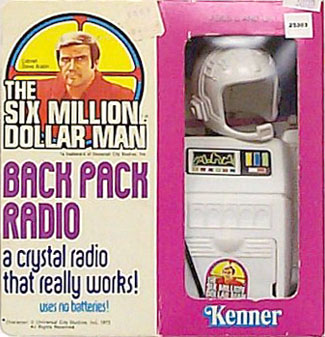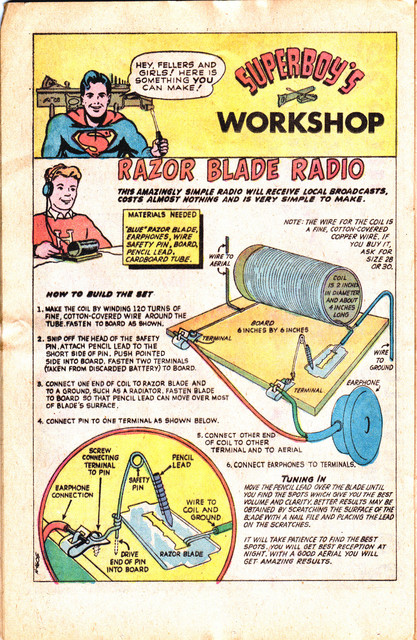Building a World War II Foxhole Radio
When I was a kid, I was fascinated by crystal radios. The first one I had was in the form of a backpack for the Six Million Dollar Man action figure ( Mom picked up the crystal set at some kind of sale before I ever had the action figure ).

The thing that fascinated me about crystal radios was that they required no external power-source; the radio signals themselves were strong enough to power a small earpiece at an acceptable volume. In order to make the radio work, I had to connect the “ground” wire to the finger-stop on a rotary-dial phone.
I had limited success trying to ground the device with fences and water-pipes and such … that clip was the best ground I could find. I thought that it was very interesting that the radio never needed batteries.
I later built several crystal radios from Radio Shack kits. There wasn’t much to them. As memory serves, the parts-list included a diode, a 100K-Ohm resistor, a tuning-coil, a variable-capacitor, an earphone, and some wire.
At some point in my youth, I happened upon a Superboy comic book that sported this page ( which was likely a reprint from an earlier era ):

This razor-blade radio looked a lot like a crystal set in design. I had thought about trying to build one, but I never got around to it.
More recently, I had remembered the project from the above comic book so I did a little investigation on the web to see if I could find out if the above contraption actually worked.
The design above was actually used by G.I.’s in World War II. I believe that the name for the apparatus is more commonly referred to as a “foxhole radio.” Soliders would make their own foxhole radios out of readily available parts and would listen to locally-broadcast propaganda and such.
Here’s a recent “how-to” video from Make magazine ( the magazine for do-it-yourselfers and tinkerers ) on building a foxhole radio:
Have fun if you try to build your own!